Zinc at Plant on Corn
March 14, 2019
Agronomics / Background
Corn can be very responsive to zinc (Zn) applications. Zinc is the most common micronutrient deficiency in corn is important in the production of auxins such as indoleacetic acid (IAA). Zinc plays a key role in chlorophyll production, carbohydrate metabolism and cell elongation, which impacts leaf size and early ear development. Therefore, a constant and continuous supply of zinc is needed for optimum growth and maximum yield. Zinc may be a micronutrient, but a lack of it can have a significant impact on your corn crop.
Conditions Leading to Zinc (Zn) Deficiencies
In addition to low soil levels of available Zn, conditions favoring Zn deficiency are cool, wet, and cloudy weather during the early growing season, high soil pH in all types of soils, sandy soils with low organic matter, organic soils, and high soil phosphorus (P) levels. High soil P levels and P fertilization rates can induce Zn deficiency in soils with marginal levels of Zn. Tissue P to Zn ratios in excess of 100:1 have been associated with Zn deficiency. Phosphorus interferes with the plant's metabolism of Zn causing the deficiency.
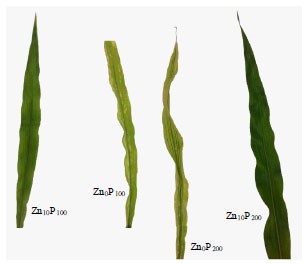
2014: Soltangheisi; Interaction Effects of Phosphorus and Zinc on their Uptake and 32P Absorption and Translocation in Corn
The interaction between Pi and Zn homeostasis in plants is relatively well understood. Pi deficiency results in overaccumulation of Zn in shoots, and inversely, Zn deficiency leads to overaccumulation of Pi in the aerial part of plants (Reed, 1946; Cakmak and Marschner, 1986; Huang et al., 2000; Bouain et al., 2014a; Khan et al., 2014; Ova et al., 2015)
There is also a correlation with increased Zn uptake and utilization with increased nitrogen and sulfur concentrations in the soil profile.
Significant yield loss can occur in soils where Zn availability is low due to high pH, leading to deficiencies that persist through the growing season. Typically soil pH levels greater than 7 are associated with Zn deficiency. Total Zn supply can be low in sandy soils and organic soils and in conjunction with high pH can exacerbate the low levels of Zn.
Desired Zinc (Zn) Tissue Test Values
The desired range for in tissue test for is between 40 to 80 ppm zinc during V stages for highly yielding corn fields.
Key Application Timings and Rates
Zinc can be applied at planting with or without starter fertilizer. It can also be added to pre-emerge applications. Both BRANDT® Sequestar® 9% Zn (1-4 qts/acre) and BRANDT® EnzUp® Zn (1 qt/acre) are great options and are both compatible with phosphate starter fertilizers.
Because of the lower application rate banded applications usually have less residual effect on the soil than broadcast rates and must be repeated annually, conversely, precision placement in the root zone is much more effective than broadcast zinc applications. Zinc movement into the soil is quite limited so subsurface placement is highly recommended for no-till production systems.
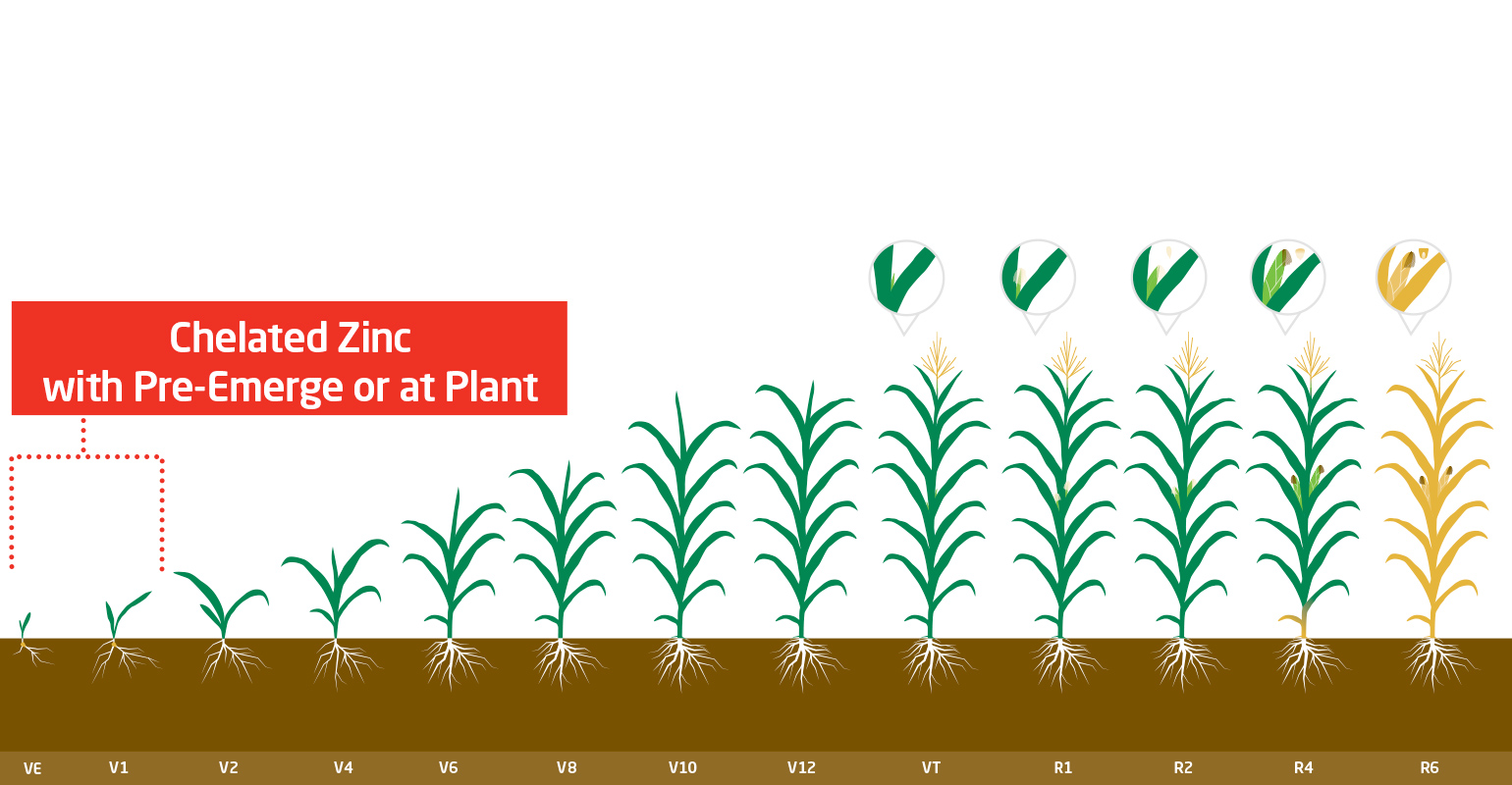
Nutrient Deficiency Illustrations
This young corn plant shows typical zinc deficiency symptoms. Note the broad white stripes on both sides of the midrib of the leaf. Photo Credit: Purdue University Department of Agriculture
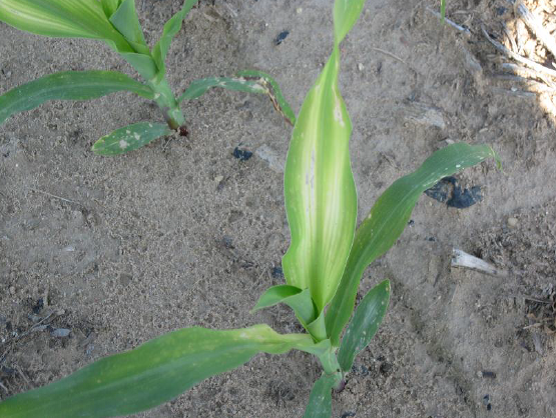
Photo Credit: University of Minnesota Extension
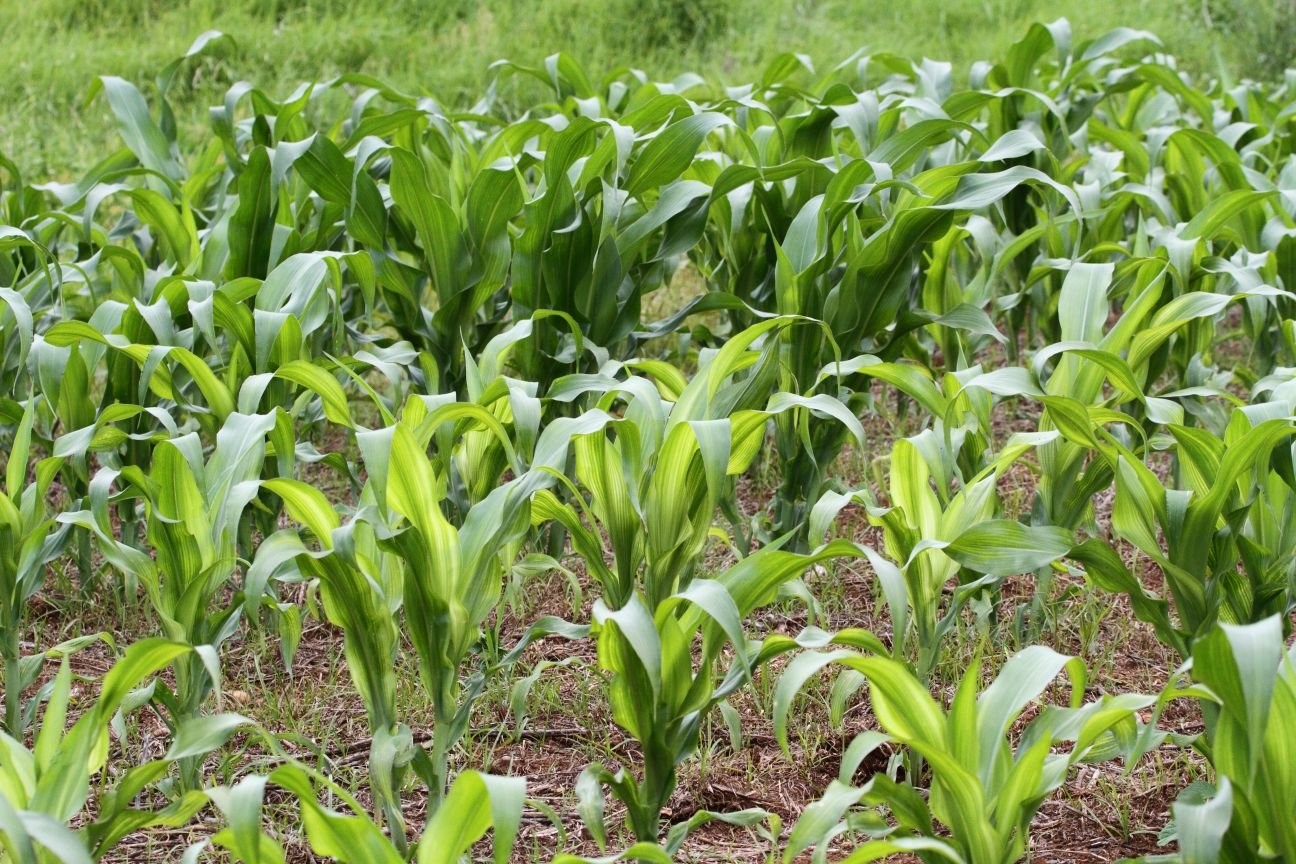
Photo Credit: University of Minnesota Extension
Zinc deficiency creates shortened internodes (top) on the corn stalk. A normal plant (bottom) is shown in contrast to the zinc-deficient plant.
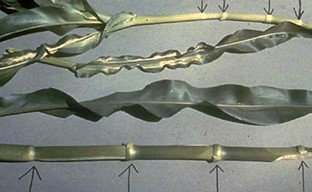
Photo Credit: University of Minnesota Extension
